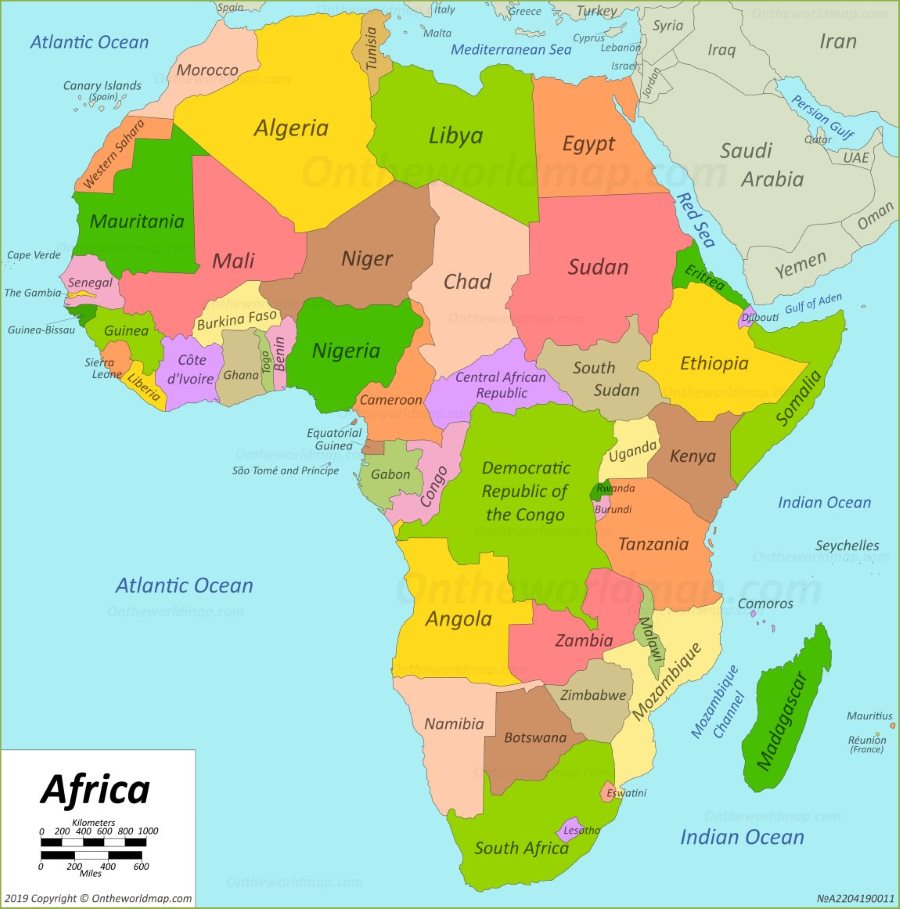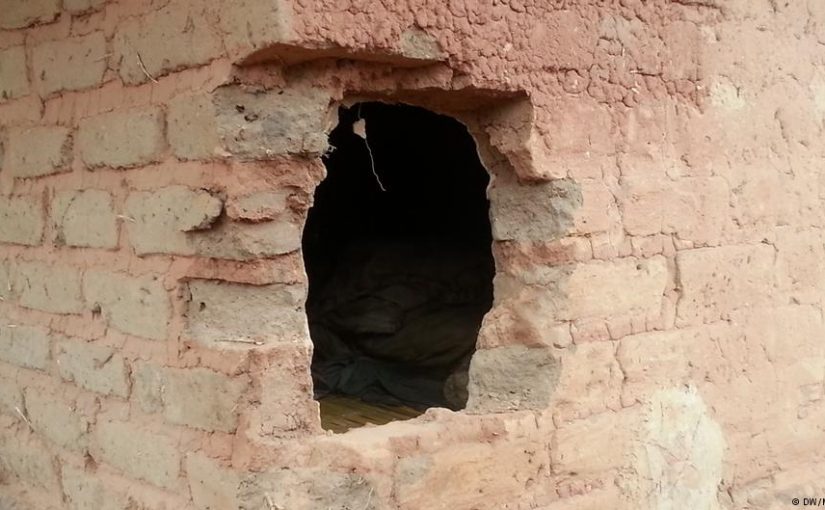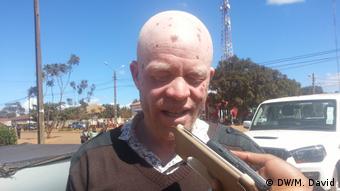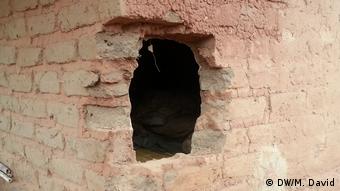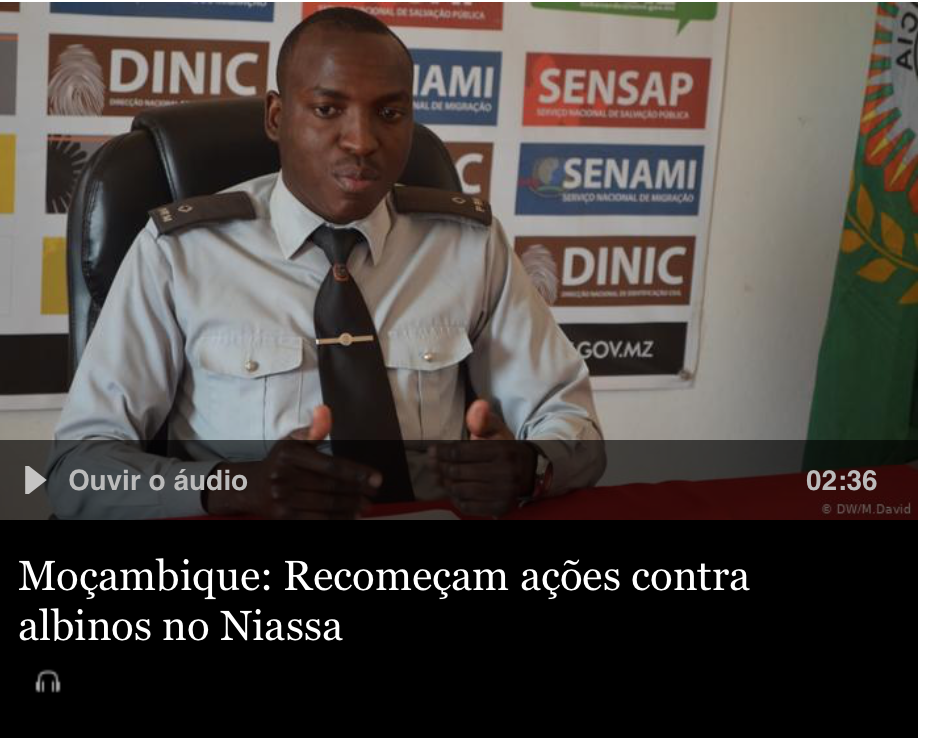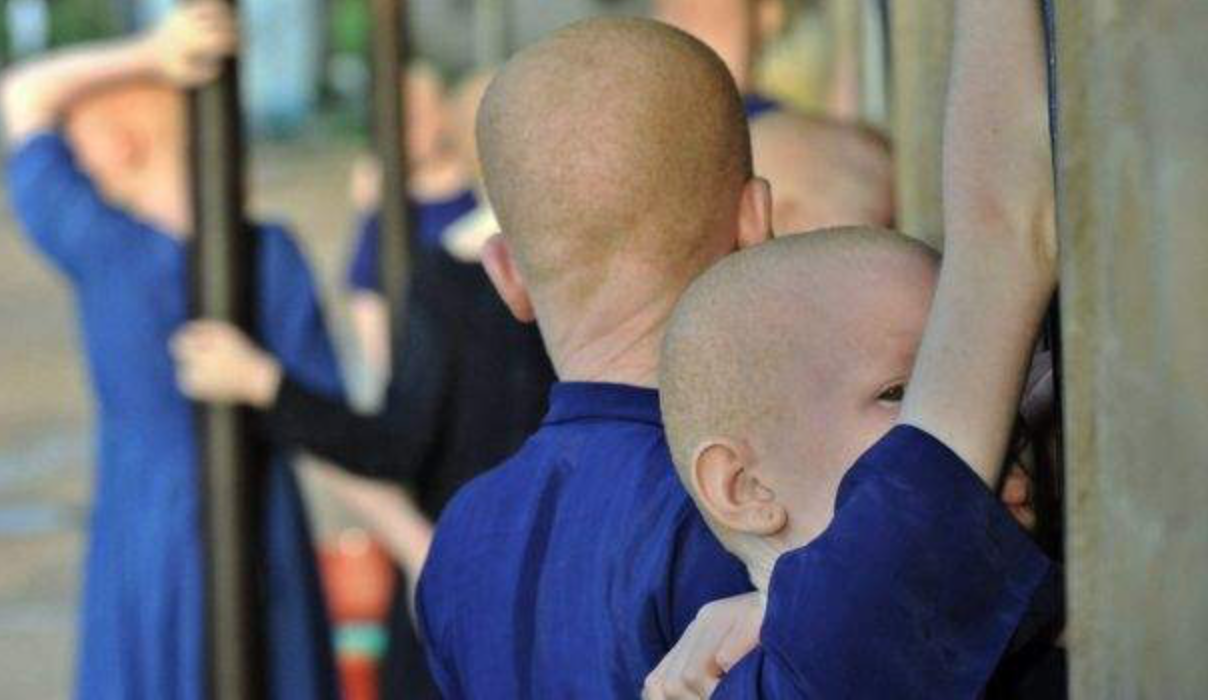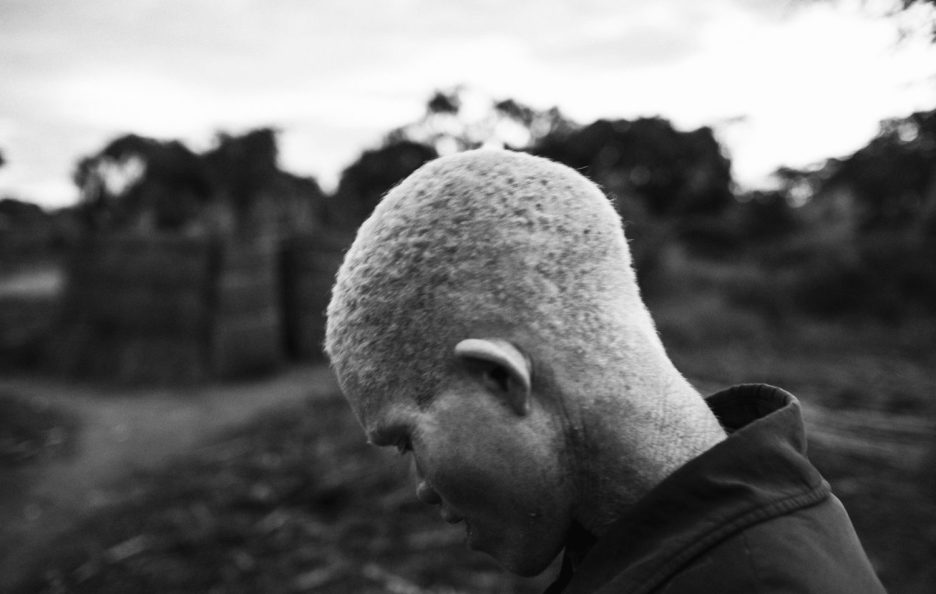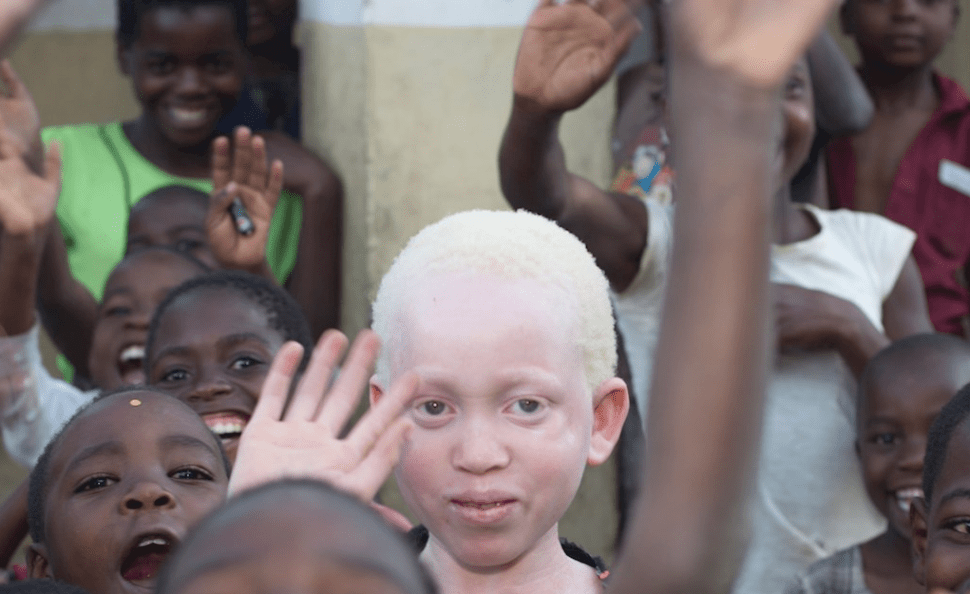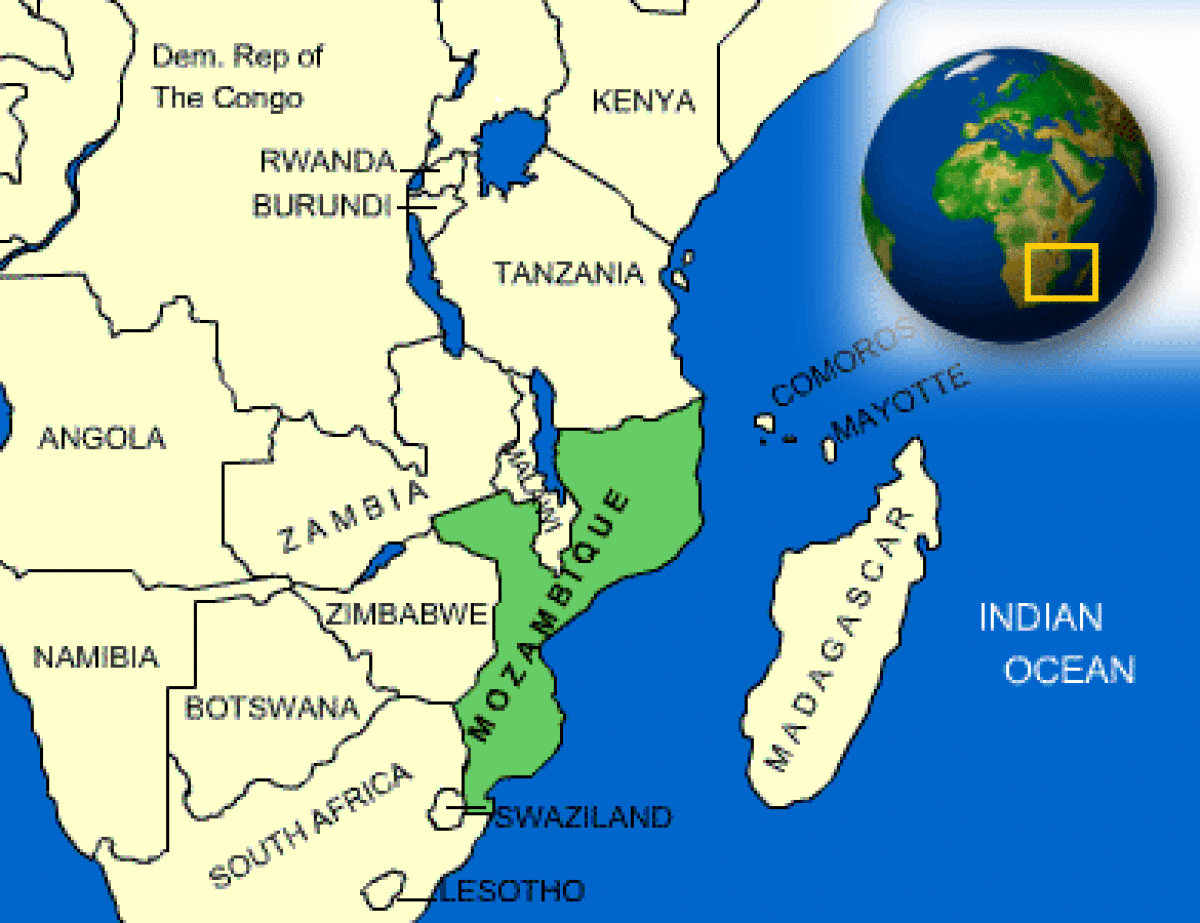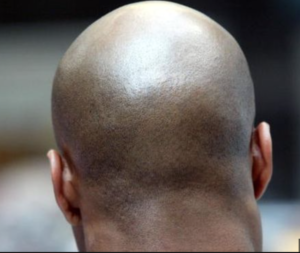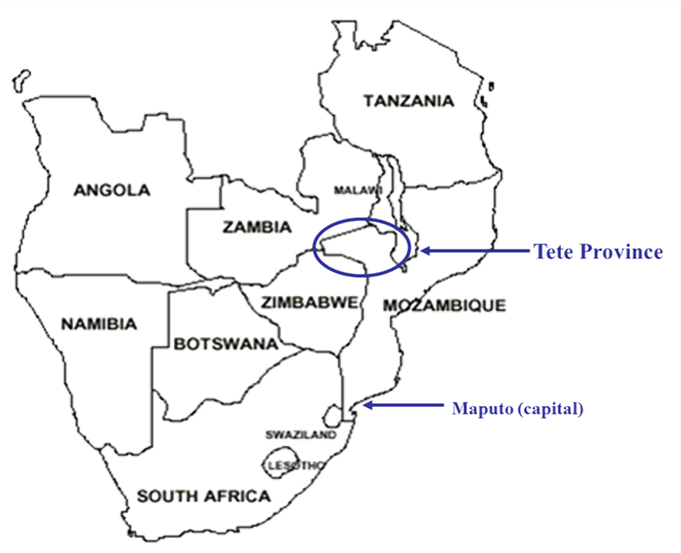It is not known with certainty how many people in Africa are affected by OCA, which stands for ‘Oculocutaneous albinism’ (see below). It maybe a quarter of a million, it may be more. What we do know is the plight of persons with albinism. The lack of melanin which brings this condition with it, results in unhealthy effects of ultraviolet radiation exposure. Moreover, widespread superstition causes many wicked people to believe that albino body parts bring wealth and/or power. As a result, persons with albinism are chased, kidnapped, murdered.
The article below contains many examples of these gruesome practices which occur in many African countries. The author, Edmund Zar-Zar Bargblor of the Liberian newspaper, The Daily Observer , is to be commend for drawing attention to these outdated and cruel practices which constitute a serious violation of the human rights of people with albinism and have no place in a modern society.
Warning: the following article contains graphic details of cruel ritualistic activities (webmaster FVDK).
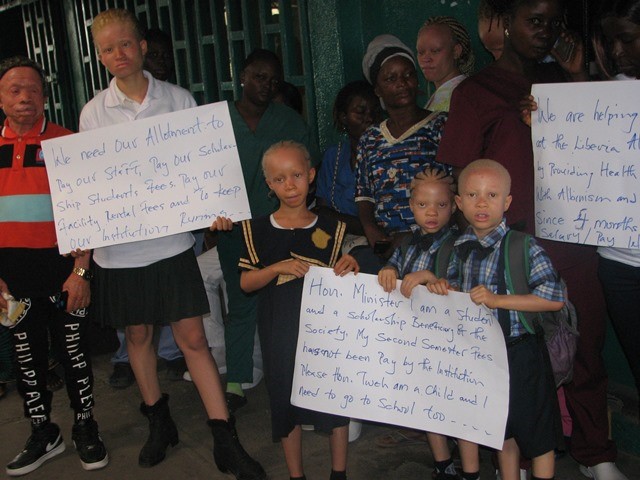
Africa’s Shameful Acts of Racism: The Plight of Persons with Albinism (PLWA) in Africa
Published: December 2, 2019
By: Edmund Zar-Zar Bargblor, The Daily Observer (Liberia), Webmaster Admin
Racism is the belief that a particular race is superior to another, and that a person’s social and moral traits are predetermined by his or her inborn biological characteristics. On the African Continent, we have seen the impact of colonialism and its attributes of racism and discrimination.
The former Apartheid system in South Africa and its institutionalized racial segregation was an extreme expression of European treatments of Africans. The miserable treatment of people living with Albinism by fellow Africans is not only unfortunate, it is shameful.
The condition known as ‘Oculocutaneous albinism’ (OCA) is a genetically inherited autosomal recessive condition and OCA2, tyrosine-positive albinism, is the most prevalent type found throughout Africa. Due to the lack of melanin, people with albinism are more susceptible to the harmful effects of ultraviolet radiation exposure.
The National Institutes of Health reported that about 200,000 Americans are affected; and around the world, it is between one in 17,000 and one in 20,000 people are people living with albinism. However, it is prevalence in parts of Africa, but it is far higher than the global average. People living with Albinism makeup about one in 4,000 people in South Africa and perhaps one in 5,000 in Nigeria. According to a 2006 review published in the journal BMC Public Health, the prevalence in Tanzania is one in 1,400, but this estimate is based on incomplete data. Since Tanzania’s total population is more than 40 million that would suggest an albinism community of about 30,000. A census is underway, however, and the Albinism Association of Tanzania believes the total figure could be more than 150,000.
People living with Albinism suffered in the hands of fellow Africans
The human rights organization Amnesty International quoted the Malawian police’s description of the gruesome murder of Mr. Machinjiri: “About four men trafficked him to Mozambique and killed him. The men chopped off both his arms and legs and removed his bones. Then they buried the rest of his body in a shallow grave.”
There are superstitions in some parts of Africa that albino body parts bring wealth, power or sexual conquest, and that having sex with a person living with the condition of albinism cures HIV and AIDS. Attackers sell albino body parts to witch doctors for thousands of dollars, according to Amnesty International. In Tanzania, some 75 people living with albinism were reported killed between 2000 and 2016.
Also, there have been reports of people living with albinism killings in South Africa; although such crimes are less common there than in Malawi, Tanzania and Burundi. Last February, a South African court sentenced a traditional healer to life in prison for murdering a 20-year-old woman living with albinism.
The Office of the UN High Commissioner for Human Rights (OHCHR), the UN agency that deals with human rights issues reported in 2016 that hunters of people living with albinism sell an entire human corpse for up to $75,000, while an arm or a leg could fetch about $2,000”.
In many African countries, it is sad and shameful the atrocious manner in which people living with albinism are treated; their lives are compounded by “exclusion, stigmatization, and denial of basic rights such as the right to education and health,” according to Amnesty International. People living with Albinism continue to experience social isolation and stigma which includes name-calling, mockery, and exclusion from certain community activities.
It is reported in Zambia that at least ten people living with albinism are murdered in ritual killings every year. Some believe their body parts bring wealth or luck. Those born with the genetic condition are calling for an end to this madness. There are more than 25,000 people living with the condition in Zambia.
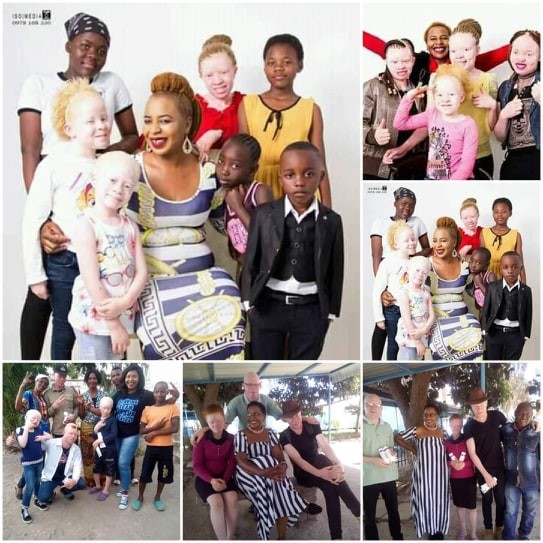
According to the Albinism Foundation of Zambia (AFZ), Executive Director John Chiti, more than 25,000 persons with albinism in Zambia are currently in need of sunscreen lotion.
In an interview with Africa Renewal, Ms. Ero, said that the albinism situation in Africa, “is a tragedy.” She referred to the 7,000 to 10,000 people living with albinism in Malawi and thousands of others in Tanzania, Mozambique and other countries as “an endangered people”, facing a “risk of extinction if nothing is done.” Tanzanians call people living with albinism zeru, zeru, meaning “ghosts.”
Prevailing Superstitious Mindsets
Superstitious mindsets in some African countries continue to seek murdered for body parts, including infants and babies. Most of the attacks have taken place in Tanzania. Murders and attempted attacks, though in smaller numbers, have also been documented in Burundi, Kenya, Swaziland, Guinea, Nigeria, South Africa, Congo, Zambia, Namibia, Ivory Coast, and Burkina Faso.
The Converson.com conducted research and looked at media reports published between 2008 and 2011 on albinism and murders in Tanzania. It published a data set of 563 media reports in both English and Swahili from Tanzanian national newspapers.
The data showed that the Tanzanian press portrayed and explained violent attacks against persons with albinism in four ways. They were:
- criminal activity,
- cultural practices,
- a socio-economic phenomenon,
- a human rights issue.
Ms. Kway-Geer, the first Member of Parliament in Tanzania with albinism described her individual testimonials, first-hand accounts of difficulties as:
“When I was at primary school, people used to laugh at me, tease me – some didn’t even like to touch me, saying that if they touched me they would get this color. People used to abuse me on the road when I took the buses to school. They would run after me – crowds of kids following me – shouting ‘zeru, zeru’. (zeru, zeru, is a derogatory term).
Recommendations
The Conversation.com has identified the following recommendations.
- There is an urgent need to address the violence faced by this vulnerable group. Public health awareness is an important first step.
- Adequate health services for skin and vision disabilities should be prioritized.
- Putting out messages that counter the stigma against people living with Albinism is also important, as is access to education.
- Interventions must consider Albinism’ human rights. For example, putting children with albinism in camps may protect their right to life and security,but it restricts their rights to freedom of movement, and family life.
In addition, African Governments should seriously advocate against harmful practices against people living with albinism. State parties should take all appropriate measures and offer support and assistance to victims of harmful practices, including legal sanctions, education, and advocacy campaign to eliminate harmful practices perpetrated on persons with albinism, such as witchcrafts, abandonment concealment, ritual killings, etc.
Conclusion
One thing for sure, the people living with Albinism did not create themselves; they were created in the same way you and I were created by the God who doesn’t make a MISTAKE. Their birth process is the same as you and me! Their mothers’ carried them for nine (9) months in their wombs before giving birth to them.
Who are we – be it an individual or government to decide that they should not live because they are different? Did God ask he needs our HELP to make His decision? The Almighty God does not need the assistance of mortal humans to run his affairs. The actions of those individuals perpetuating violence against persons suffering from albinism are no different than King Leopold II of Belgium, Adolph Hitler of Germany, Napoleon Bonaparte of France, and White racists today.
In Genesis 1:31(NIV): “God saw all that he had made, and it was very good…” God himself said it was Good, NOT bad. God doesn’t create anything UGLY! So, why individuals, including governments, are killing these innocent people? In addition, 1 Thessalonians 5:22 instructs us to “Abstain from all appearance of evil.” Accordingly, the GENOCIDE against these poor innocent people must be STOPPED!
Now, take a closer look at the beautiful tapestry of the people living with Albinism provided here. The question that readily comes to mind is any of you better looking than the people living with Albinism provided in these photos? I DOUBT IT! Therefore, let the persecution and killing of people living with Albinism STOP before the wrath of God descends upon us.
As Africans, it is embarrassing to read or hear that other Africans are discriminated against due to their race. Racism is contrary to God’s plan for humanity. The divisions we face today in contemporary Western nations are due to Race, the color of one’s skin or ethnic background. And obviously, this perception is not part of God’s plan.
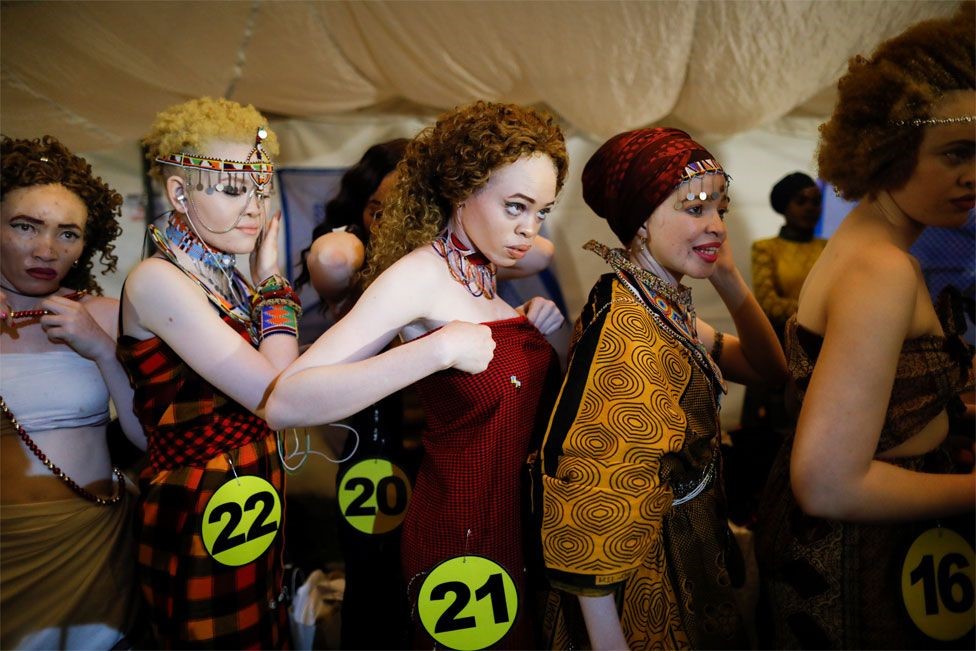
In the words of Maya Angelou: “We, the black people, the most displaced, the poorest, the most maligned and scourged, we had the glorious task of reclaiming the soul and saving the honor of the country. We, the most hated, must take hate into our hands and by the miracle of love, turn loathing into love. We, the most feared and apprehensive must take the fear and by love, change it into hope. We, who die daily in large and small ways, must take the demon death and turn it into life.”
Indeed, Children living with albinism in Africa are our brothers, sisters, daughters, and sons, let us protect them always, they are all God’s children as well.
Source: Africa’s Shameful Acts of Racism: The Plight of Persons with Albinism (PLWA) in Africa
